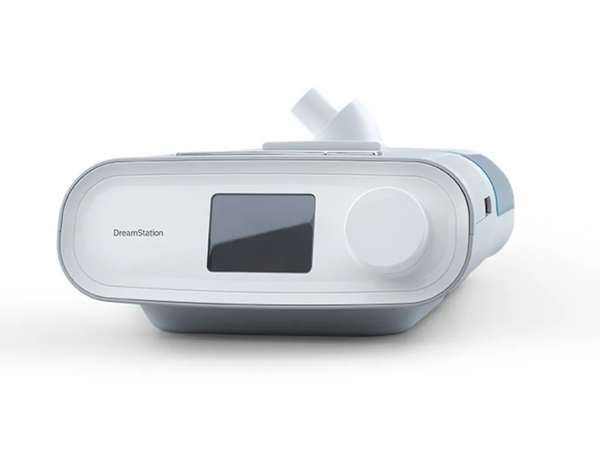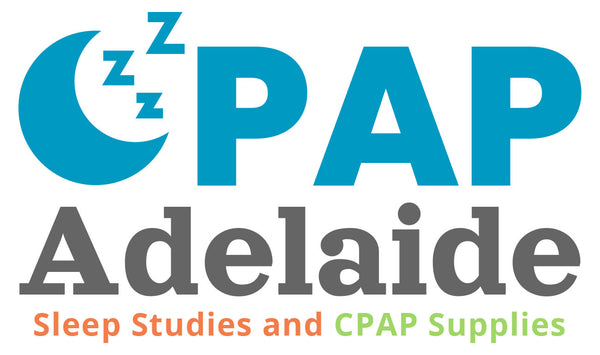1. What is the Philips DreamStation Auto CPAP Machine, and who is it for?
The Philips DreamStation Auto is a fully-featured CPAP (Continuous Positive Airway Pressure) machine designed to treat Obstructive Sleep Apnea (OSA). It’s ideal for users looking for a personalised, comfortable, and clinically supported sleep therapy experience. With auto-adjusting pressure technology, it continuously monitors your breathing throughout the night and adapts in real time, ensuring optimal airflow is delivered without overwhelming the user. Whether you’re new to CPAP or transitioning from another device, the DreamStation offers an easy-to-use interface and premium features that make therapy more comfortable and effective.
2. What makes the DreamStation Auto CPAP different from other machines?
Unlike standard CPAP machines with fixed pressure settings, the DreamStation Auto uses intelligent algorithms to detect apneas, hypopneas, and flow limitations. It automatically adjusts the pressure to match your needs breath-by-breath. Key features include A-Flex pressure relief for easier exhalation, an integrated heated humidifier for added comfort, a sleek and compact design, and Bluetooth connectivity for seamless data tracking. It’s a highly responsive and intuitive device built with user comfort and long-term therapy success in mind.
3. How does the built-in humidifier benefit me, and can I turn it off?
The integrated heated humidifier adds warmth and moisture to the airflow, significantly reducing dryness, sore throat, and nasal congestion—common side effects of CPAP therapy. This is especially important if you live in a dry climate or are prone to sinus irritation. If preferred, the humidifier can be turned off, but many users find it to be a major contributor to long-term comfort and compliance. The device even includes adjustable humidity levels and optional heated tubing to prevent “rainout” (condensation in the tube).
4. Is it difficult to set up and use the DreamStation?
Not at all. The DreamStation is known for its intuitive interface and user-friendly design. It features a color LCD screen with a large dial for navigation, clear menus, and simple setup steps. The machine walks you through a first-time setup and displays nightly data summaries in an easy-to-understand format. You’ll also get helpful reminders to clean or replace components at the right time. With Bluetooth and the DreamMapper app, your progress and settings can be tracked from your phone.
5. What is SmartRamp, and how does it help with falling asleep?
SmartRamp is a comfort feature that starts therapy at a lower pressure, gradually increasing it to the prescribed level over a user-set period. This gives your body time to relax and drift off to sleep without feeling overwhelmed by high pressure from the start. It’s especially helpful for new users still adjusting to CPAP therapy or anyone who finds high pressure uncomfortable at bedtime.
6. Can I travel with the DreamStation?
Absolutely! The DreamStation is designed with portability in mind. It’s compact, lightweight, and compatible with international voltages (100–240V), making it ideal for travel. It can be used with a travel case, portable battery packs (sold separately), and even on airplanes with proper airline approval. Just be sure to bring a suitable plug adapter for international use. The device also has a “flight mode” to disable wireless communication if needed.
7. What is A-Flex pressure relief, and why is it important?
A-Flex is Philips’ proprietary pressure relief technology that softens the airflow as you exhale. Many users find exhaling against pressure to be one of the most uncomfortable parts of CPAP therapy. A-Flex creates a more natural breathing rhythm by slightly lowering pressure during exhalation and increasing it during inhalation, mimicking your natural respiratory pattern. This helps reduce discomfort and encourages therapy adherence.
8. How do I clean and maintain the machine properly?
Routine maintenance is key for long-term performance. Here’s a quick guide:
- Daily: Empty and rinse the humidifier chamber.
- Weekly: Wash your mask, tubing, and humidifier with mild soap and warm water. Let everything air-dry completely.
- Monthly: Check the air filters and replace them if needed.
- Every few months: Replace tubing, mask cushions, and other accessories per manufacturer recommendations.
Always use distilled water in the humidifier to avoid mineral buildup.
9. What filters does the DreamStation use, and how often should they be replaced?
The DreamStation uses two types of filters:
- Reusable Pollen Filter: Captures larger particles; should be rinsed weekly and replaced every 6 months.
- Disposable Ultra-Fine Filter: Traps smaller particles like dust and allergens; replace every 30 days or sooner if it looks dirty.
These filters keep your airflow clean and your device working efficiently. Using clean filters also improves air quality and reduces the risk of respiratory irritation.
10. Can I use the DreamStation with any mask?
Yes, the DreamStation Auto CPAP is universally compatible with all standard CPAP masks. Whether you prefer a full-face mask, nasal mask, or nasal pillow system, the machine can deliver effective therapy through it. Be sure to consult your clinician or CPAP provider if you’re unsure which mask type is best suited for your sleeping position, breathing style, or comfort preferences.
11. Is the machine noisy? Will it disturb my partner?
Not at all. The DreamStation Auto CPAP operates at a very quiet <30 dBA, which is softer than a whisper. Its quiet operation ensures both you and your bed partner enjoy uninterrupted sleep. Users often report barely noticing the machine once they’re accustomed to it. The low noise level is one of the reasons it’s so popular for home use.
12. How do I know if my therapy is working?
Your DreamStation automatically records and tracks your therapy data, including usage hours, apnea events, leak rates, and your apnea-hypopnea index (AHI). You can view a basic summary directly on the device or get a more detailed report through the DreamMapper app, which syncs via Bluetooth. Monitoring your progress can help you stay motivated, improve your sleep hygiene, and share helpful insights with your clinician during follow-up visits
13. What kind of support is available if I need help with my machine?
The CPAP Clinic offers ongoing support for DreamStation users, including phone consultations, equipment troubleshooting, and reminders for filter or accessory replacements. Additionally, the device includes a standard 2-year warranty. If you ever need assistance beyond what’s covered, Philips offers an extended care program and customer support line to help resolve issues quickly.
14. How long do accessories like masks, tubing, and filters last?
While actual replacement frequency depends on usage and cleaning habits, here’s a general guide:
- Mask Cushions & Nasal Pillows: Every 1–3 months
- Complete Mask Frame: Every 3–6 months
- Tubing: Every 3–6 months
- Reusable Filters: Every 6 months (clean weekly)
- Disposable Filters: Every 30 days
Keeping accessories fresh ensures optimal hygiene, airflow, and comfort.
15. Is the DreamStation Auto CPAP eligible for a care plan or payment program?
Yes, the DreamStation Auto CPAP is available through both the Basic and Complete Care Plans offered by The CPAP Clinic. These value-packed plans include ongoing clinical support, scheduled accessory replacements, regular sleep therapy reviews, and equipment upgrades—all with no large upfront cost. Get started with as little as $1 upfront, followed by easy fortnightly payments. It’s a smart, affordable way to stay on track with your therapy and enjoy long-term results with confidence.





